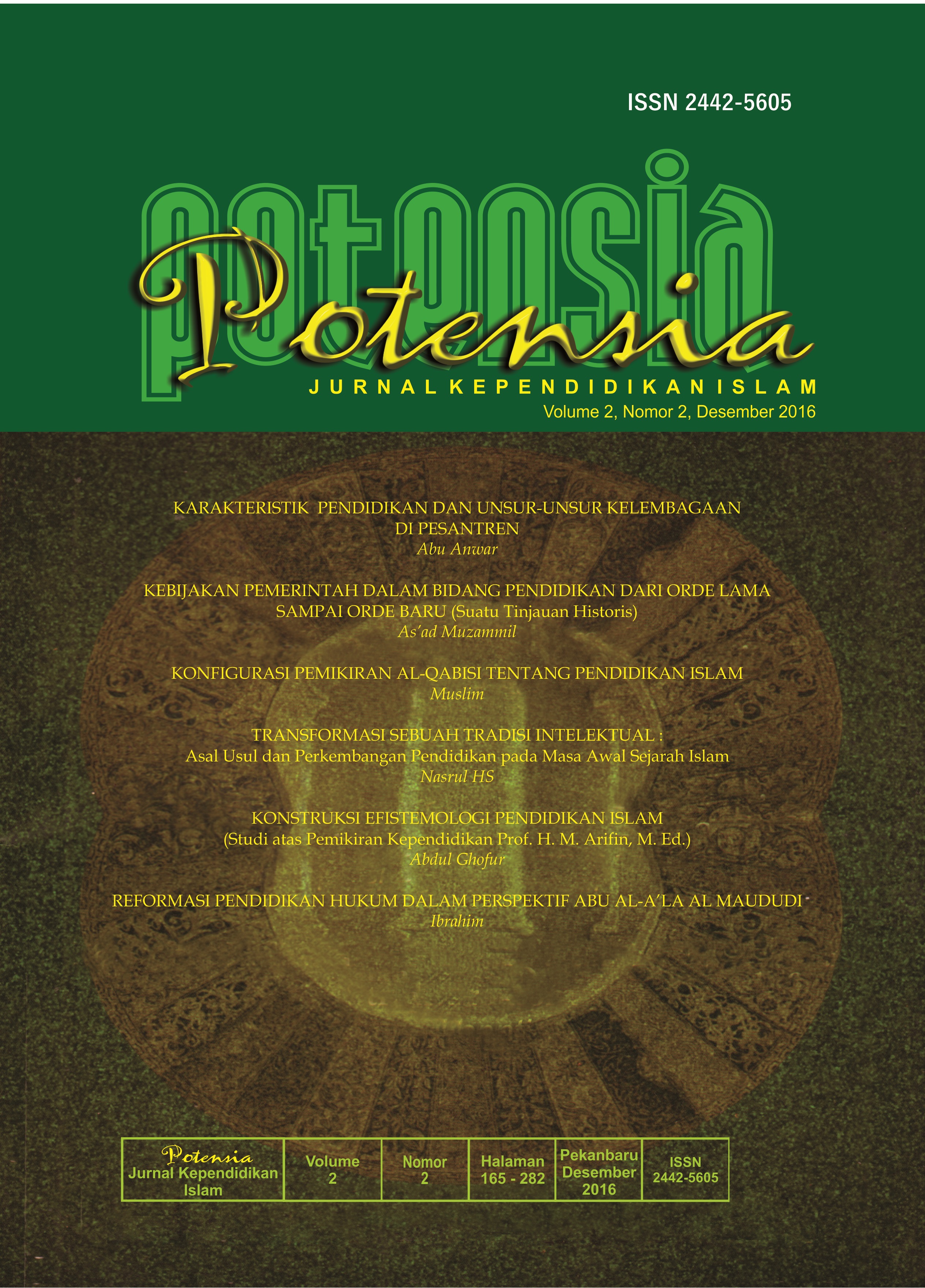KARAKTERISTIK PENDIDIKAN DAN UNSUR-UNSUR KELEMBAGAAN DI PESANTREN
DOI:
https://doi.org/10.24014/potensia.v2i2.2536Kata Kunci:
pesantren, kyai, Islamic education, institution.Abstrak
Pesantren is basically a traditional Islamic education where the students lived with and studied under the guidance of one (or more) teachers are better known as kyai. Although pesantren was considered traditional, but still exist and survive in modern age and global era. Obviously because this institution has its own characteristics and maintain institutional elements that have formed since former. The characteristics of education in pesantren classified to two: (1) the general pattern of education, which are pesantren institutions introducing levels, from that teach simple texts until sublime pesantren that teach high level texts. (2) Teaching systems are the sorogan system and bandongan system. As for the institutional elements in pesantren are cottage, mosques, students, kyai, classical islamic books##submission.downloads##
Diterbitkan
2016-12-15
Cara Mengutip
Anwar, A. (2016). KARAKTERISTIK PENDIDIKAN DAN UNSUR-UNSUR KELEMBAGAAN DI PESANTREN. POTENSIA: Jurnal Kependidikan Islam, 2(2), 165–182. https://doi.org/10.24014/potensia.v2i2.2536
Terbitan
Bagian
Articles
Lisensi
POTENSIA: Jurnal Kependidikan Islam operates an Open Access policy under a Creative Commons Attribution 4.0 International License. Authors who publish with this journal agree to the following terms:
- Authors retain copyright and grant the journal right of first publication with the work simultaneously licensed under a Creative Commons Attribution 4.0 International License that allows others to share the work with an acknowledgement of the work's authorship and initial publication in this journal.
- Authors are able to enter into separate, additional contractual arrangements for the non-exclusive distribution of the journal's published version of the work (e.g., post it to an institutional repository or publish it in a book), with an acknowledgement of its initial publication in this journal.
- Authors are permitted and encouraged to post their work online (e.g., in institutional repositories or on their website) prior to and during the submission process, as it can lead to productive exchanges, as well as earlier and greater citation of published work.

